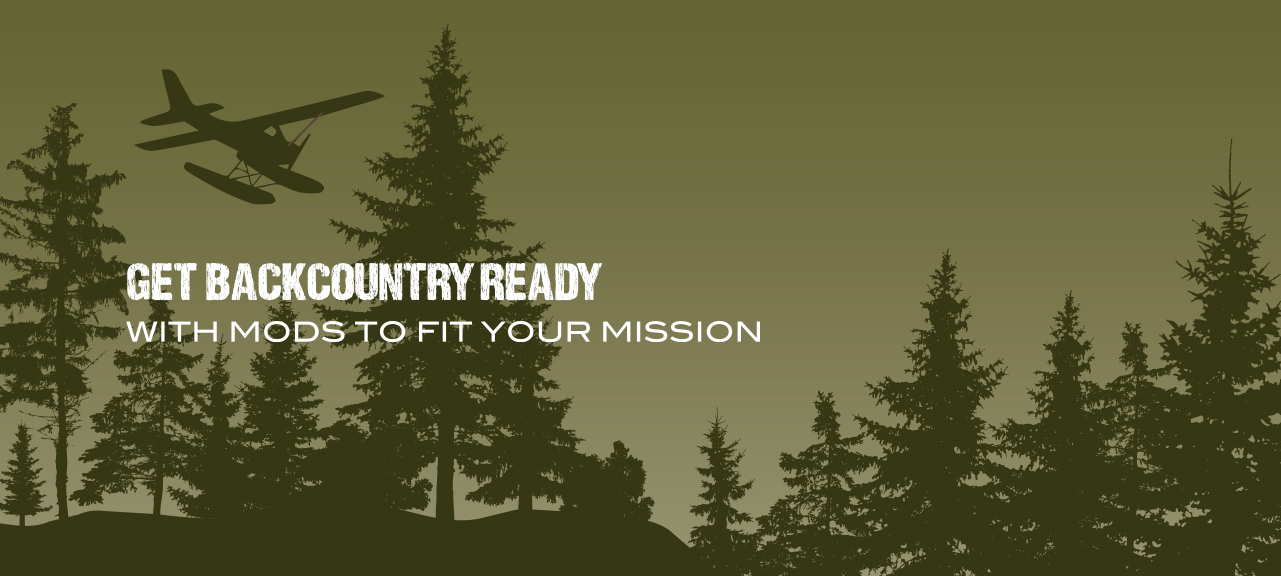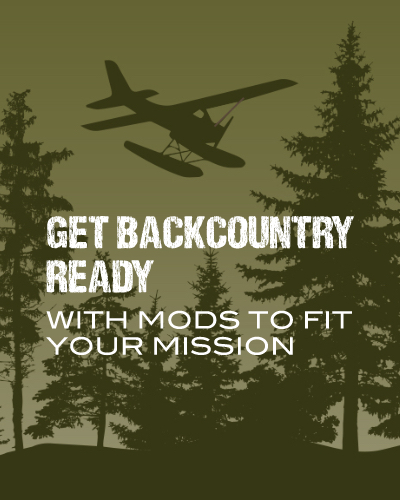

Part of the thrill of backcountry flying is accessing challenging and sometimes unforgiving environments. If you really want to go off the beaten path—while staying safe—it’s important to equip your airplane to handle the roughest terrain. By adding a few modifications, you can take your aircraft’s performance to the next level and rise to the challenges of backcountry flying.
Here are a few backcountry mods worth considering:
Landings on rough or unstable terrain call for rugged tires. Oversized bush wheel or “tundra tires” are larger and low in pressure to provide better shock absorption on short landings and safer operations on gravel, dirt, sand, and rocky terrain. Tall tires also keep the nose of the airplane higher, helping to prevent the risk of prop strikes in the backcountry.
Successful, safe short takeoff and landings require low-speed control and stability. Modifying your aircraft’s wings with a STOL wing kit can help to reduce stall speeds, improve lift, and reduce takeoff and landing distances. A STOL kit may also help increase your aircraft’s useful load, allowing you to carry more supplies or bring another passenger into the backcountry.
Although LED aviation lights are pricier than their incandescent or halogen counterparts, they are brighter and last significantly longer. Day or night, you want your airplane to be visible to other pilots to prevent midair collisions. Upgraded lighting can also make a difference when it comes to preventing bird or wildlife strikes in the backcountry.
Another way to improve backcountry and STOL performance is to upgrade to a propeller that’s specialized to maximize low-speed thrust, takeoff, and climb performance. Recreational and bush pilots around the world rely on Hartzell’s backcountry propellers, which are approved on numerous certified aircraft.